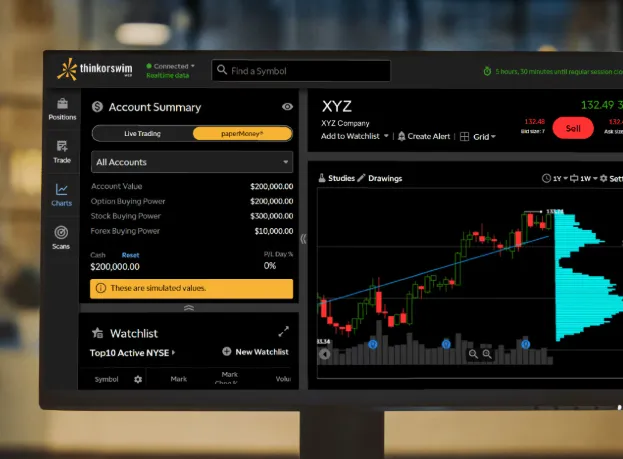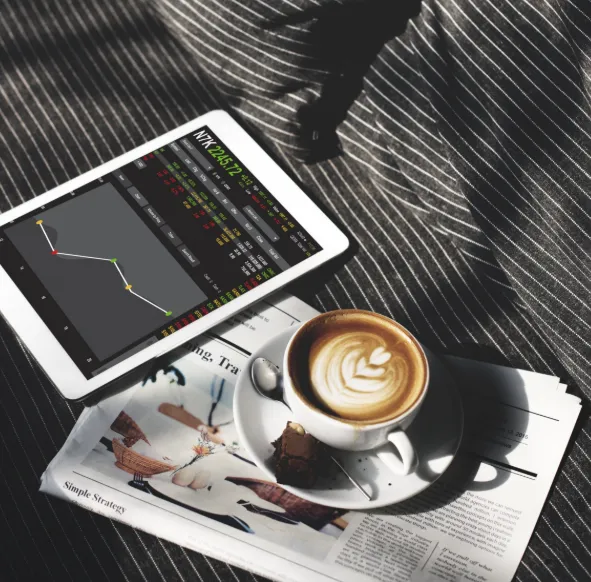Paper trading is an excellent way for investors and traders to practice their strategies, test different approaches, and explore trading platforms without putting real money at risk. This process has evolved from its humble beginnings—where investors manually tracked trades on paper or spreadsheets—to the more modern and efficient simulation platforms available today.
What is Paper Trading?
Traditionally, paper trading involved recording buy and sell orders by hand and calculating profits and losses manually. In today’s digital world, paper trading is conducted through online platforms that simulate real trading environments. These platforms help traders familiarize themselves with the tools and features of trading platforms, making it easier to experiment without the pressure of losing actual funds.
How Paper Trading Works
To start paper trading, you need only basic tools like a pen, paper, and details about the stocks you’re interested in. You’ll track how the price of stocks changes over time and calculate how much profit or loss you would have made if the trades were real. This provides a simple yet effective way to assess your stock predictions.
Today, many online platforms offer virtual trading, with some providing real-time market data, while others may have slight delays. For beginners, paper trading serves as an excellent introduction to the market, while experienced investors can use it to refine their strategies. While paper trading simulates the stock market, it does not reflect real market conditions, as it operates independently of actual market fluctuations.
Getting Started with Paper Trading
Paper trading is accessible to anyone, and it doesn’t require complicated setups. For the simplest approach, all you need is pen and paper, but using a trading platform will provide a more accurate simulation of real market conditions. Here’s a simple guide to get started:
- Set an Initial Investment Amount
Start by deciding how much virtual capital you want to invest, such as Rs 10,000. This helps keep track of your trading activities and simulate real-world investing. - Select Your Stocks
Choose a set of stocks you want to track and invest in. You can start with one or more, depending on your goals. Note down the current price of each stock. - Allocate Your Investment
Divide your virtual capital among the selected stocks. This mirrors how you’d distribute real investments. Be mindful to ignore transaction costs, as these fees are typically absent in paper trading. - Track Your Performance
At the end of each day, check the stock prices and calculate how your investments performed. This allows you to learn how your strategy plays out over time.
Many brokers now offer virtual trading platforms and stock simulation games, allowing you to practice your skills in a risk-free environment.
Eliminating the Risk of Loss
The biggest advantage of paper trading is that it eliminates any real financial risk. Even if you make mistakes or experiment with flawed strategies, you won’t lose real money. This provides a low-pressure environment where you can learn from your mistakes without the fear of losing your investment.
Reducing Stress in Trading
Trading often triggers two emotions in investors: fear and greed. These emotions can cloud judgment, leading to poor decision-making during volatile market conditions. With paper trading, you can eliminate these emotional pressures, allowing you to focus on the process rather than the emotional rollercoaster that comes with real trading. This makes it easier to assess the effectiveness of your strategy based on objective analysis rather than emotional impulses.
Refining Your Strategy
One of the best features of paper trading is that it allows you to spot flaws in your strategies before applying them in the real market. By practicing with virtual funds, you can fine-tune your approach, improve your trading techniques, and build more confidence. The ability to run your strategies through various simulated market conditions helps you prepare for real-life scenarios without any financial consequences.
Planning Your Investment Strategy
Paper trading can also aid in the development of a solid investment strategy. It provides valuable insights into how different strategies perform under various market conditions. If a strategy doesn’t work out, you can adjust or abandon it without suffering real losses. This iterative process helps you develop a more refined and effective approach over time.
The Downsides of Paper Trading
While paper trading offers several benefits, it’s important to be aware of its limitations:
- No Real-World Costs
Paper trading doesn’t account for the real-world costs of trading, such as commissions, fees, or taxes. These expenses can impact your profitability, and paper trading doesn’t provide a realistic picture of how they affect your returns. - Lack of Emotional Engagement
Real trading involves emotions—fear, excitement, and anxiety—especially when executing trades under pressure. Paper trading, on the other hand, doesn’t evoke these feelings, which means it doesn’t prepare you for the emotional rollercoaster of live trading. - Overconfidence Risk
Because paper trading involves no real financial risk, it can create a false sense of confidence. Traders may start making decisions that they wouldn’t normally make in a real market situation. This overconfidence can lead to significant mistakes once they transition to actual trading. - Differences from Real Trading
While paper trading offers a useful practice environment, it’s not the same as trading in a live market. Real trading is affected by factors such as market sentiment, news, and human emotions, which can’t be fully replicated in a paper trading simulation.
Conclusion
Paper trading is a valuable tool for both beginners and experienced traders to test strategies and learn the ins and outs of trading without risking real capital. It allows you to practice, refine your approach, and build confidence in a stress-free environment. However, it’s important to recognize its limitations. Once you’re comfortable, transitioning to real trading will require a shift in mindset, as you’ll need to manage emotional pressure and deal with the complexities of actual market conditions.













